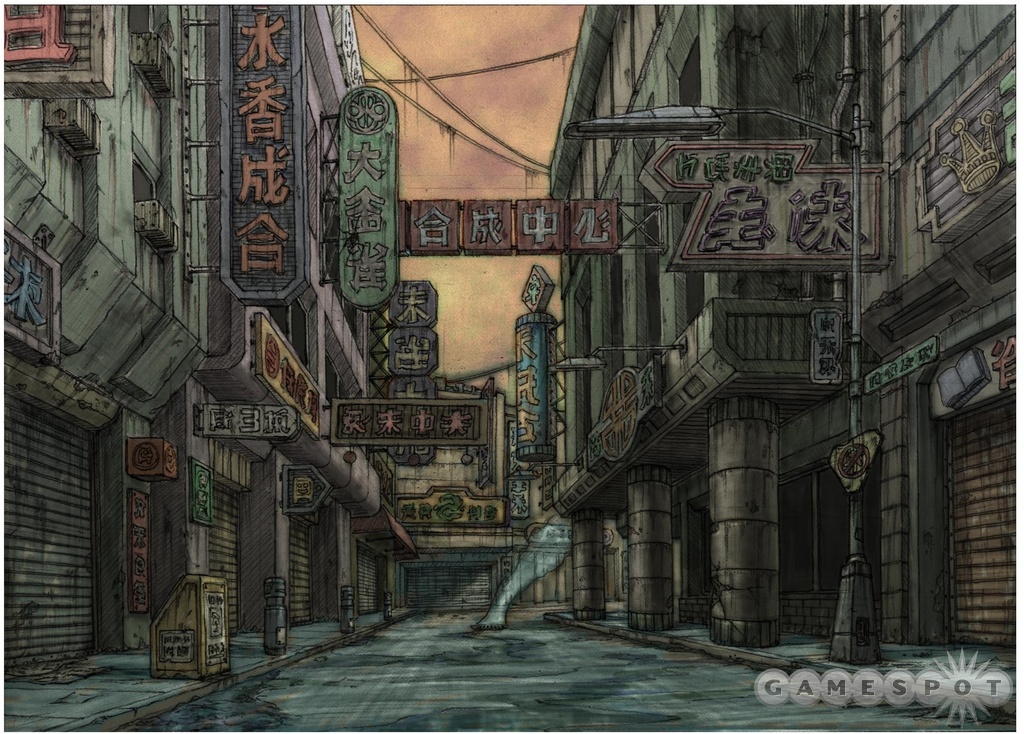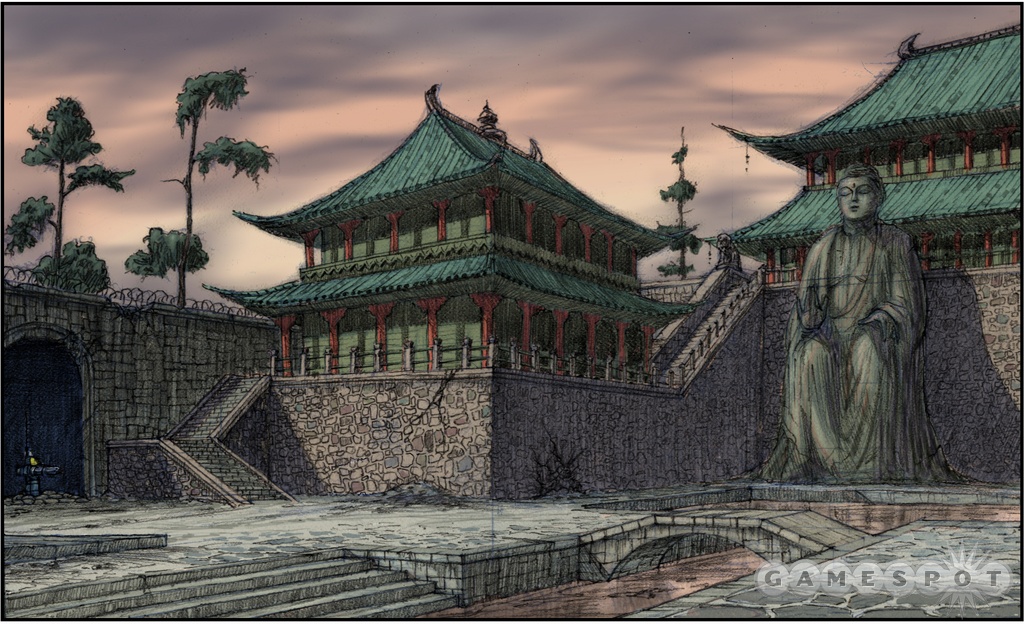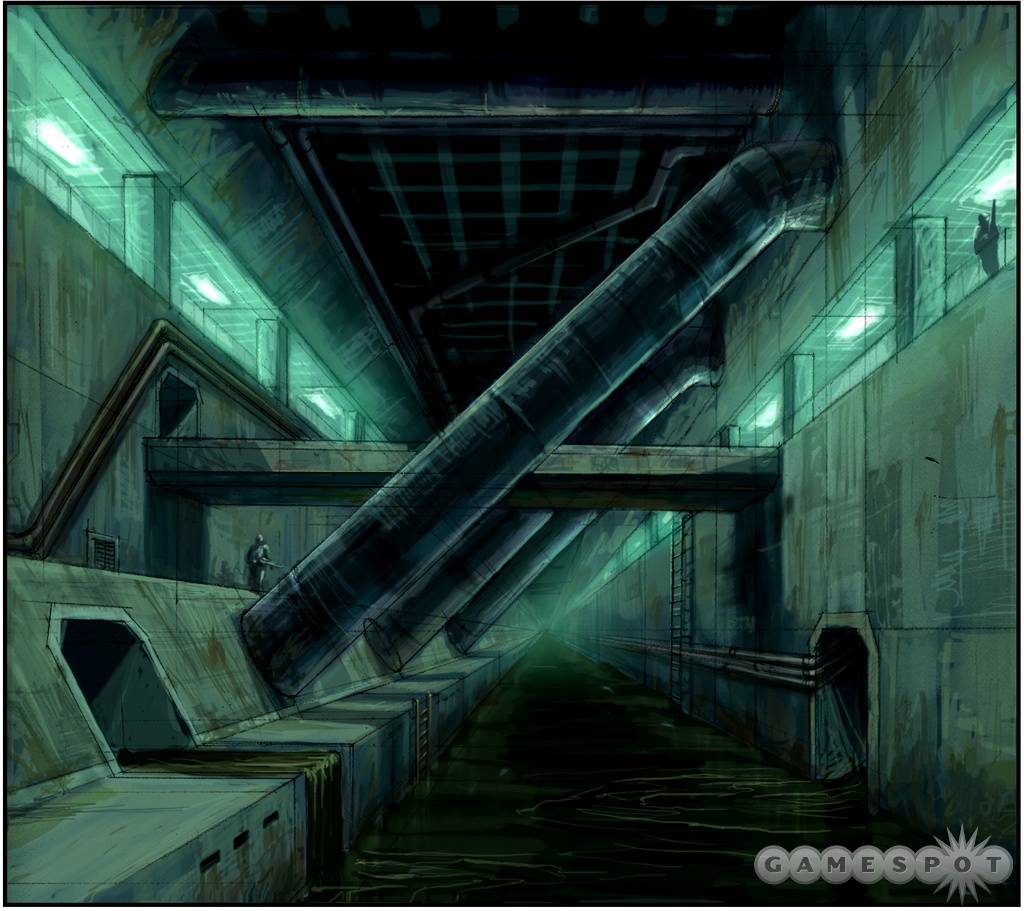Project: Snowblind Level Design
Jason Weesner of Crystal Dynamics gives us the lowdown on the level design in Project: Snowblind.
If you've been following our previous coverage of Project: Snowblind, you'll know the game is a futuristic first-person shooter in which you'll assume the role of a cybersoldier named Nathan Frost. You'll also know that, as Frost, you'll have access to a formidable and somewhat unusual arsenal of weapons and gadgets. The nature of these weapons and gadgets has made for some interesting challenges when it comes to the game's level design, as Crystal Dynamics designer Jason Weesner explains.
On the Level
By Jason Weesner
Designer
The year 2065 is a dangerous time to be a newly commissioned Liberty Coalition supersoldier. The last vestiges of the great Republic army are mounting an aggressive civil war campaign for dominance of the greater Hong Kong area. If the Republic succeeds in its ambitions, Hong Kong and the surrounding territories will become a staging area for the Republic's renewed attempts to spread its ideology across the globe.

Level design is all about the integration of gameplay, art, and narrative. When the Project: Snowblind development team started creating levels for the game, we had three main goals for the level designs. 1) We wanted some amount of player choice based on weapons and augmentations. 2) We wanted a sense of gritty realism mixed with futuristic elements. 3) We wanted to incorporate total-war and infiltration-based missions.
As you've probably read in the previous Project: Snowblind developer talks, the player has access to a wide variety of weapons, augmentations, and gadgets. One of the big considerations in the level-layout process was that we provide environments where the player could use this variety of mechanics to create new experiences and multiple solutions to gameplay situations. When we sat down to design a level, we looked at rough layouts from multiple angles, not only thinking out the primary player path, but also the possibilities for variations on the path that would occur from augmentation and gadget use. For example, in the first urban level, the player and his or her Liberty Coalition squad are immediately caught in heavy cross fire. Republic forces both in the street and above street level are seriously outgunning the good guys. With the player's selection of weapons and the support of the squad, the player could knuckle down and fight through the Republic gauntlet suffering some amount of damage and the loss of some friendlies. But the player could also find a side route that could give him or her a chance to use the reflex boost augmentation to sneak up on Republic forces and then take over the manned emplacements on the second floor. Alternately, the player could also use an ice pick to gain access to another emplacement area or to even commandeer a vehicle.

The multiple levels of Project: Snowblind take the player from besieged temple grounds to war-torn urban arteries to high-rise enemy headquarters to eerie supercomputer centers. Compared to other games in the FPS genre, the artists and level designers on the development team strove to create a wide palette of both visual and gameplay experiences across the selection of levels. Exhaustive research was done on various locations around Hong Kong to find areas that could be reappropriated with our specific style of high-tech and gritty realism. Once the player path was blocked out, the art team outfitted the level with a fantastic amount of detail that really brought the different levels to life through environmental effects and destructible elements. The last major elements we needed to support with our level layouts were the two distinct gameplay styles: total-war and infiltration.
Total-war missions are all about large-scale battles and the player's efficient use of primary and secondary weapons. With this in mind, the total-war levels were designed with large amounts of destructibility and multiple cover points for both the player and the artificially intelligent friendlies that fight alongside them. We wanted the battles to have scope both in size and intensity, so we played around with different battleground layouts that would support small skirmishes (player versus enemies) and large-scale conflicts (player and friendlies versus enemies). For example, in the first temple mission, the total-war scenario starts off on a fairly small scale with a medium-sized battleground, a few friendlies, and a midsized platoon of Republic soldiers. The pace is fairly frantic, but it allows room for the player to get the feel of the controls and the weapons. The next area of the temple is a much larger courtyard where the scale of the battle is increased with a larger battleground, more friendlies, and a significantly increased enemy presence. This is where the pace really increases with large-scale destructibility, enemy air support, and a seemingly never-ending stream of enemies entering the battlefield from all sides.

For our infiltration-based missions, we generally created more-complex layouts with more opportunity for multiple paths and multiple solutions to gameplay setups. These are the levels where the augmentations and gadgets really come into their own. The level designs support both well-executed infiltration tactics (a combination of player mechanics and the effective recognition/avoidance of security systems) and aggressive tactics, which result in wildly increased enemy responses. The first instance of this type of gameplay that the player will experience occurs in the Republic headquarters elevator foyer. The very first area of the level features numerous elevators, as well as a small Republic force on patrol. From the player's start point, it's relatively easy to move into the area to observe the Republic patrol routes without being spotted. However, if the player moves too loudly or decides to take on the Republic enemies, security systems alert the building, and other Republic soldiers begin to arrive in the elevators.
So, I hope this has given you some insight into some of the basic principles behind our level-design philosophy. Both design and art have really pushed the hardware to its limits to provide interesting gameplay spaces, so we hope you enjoy the fruits of our labor!
Got a news tip or want to contact us directly? Email news@gamespot.com
Join the conversation